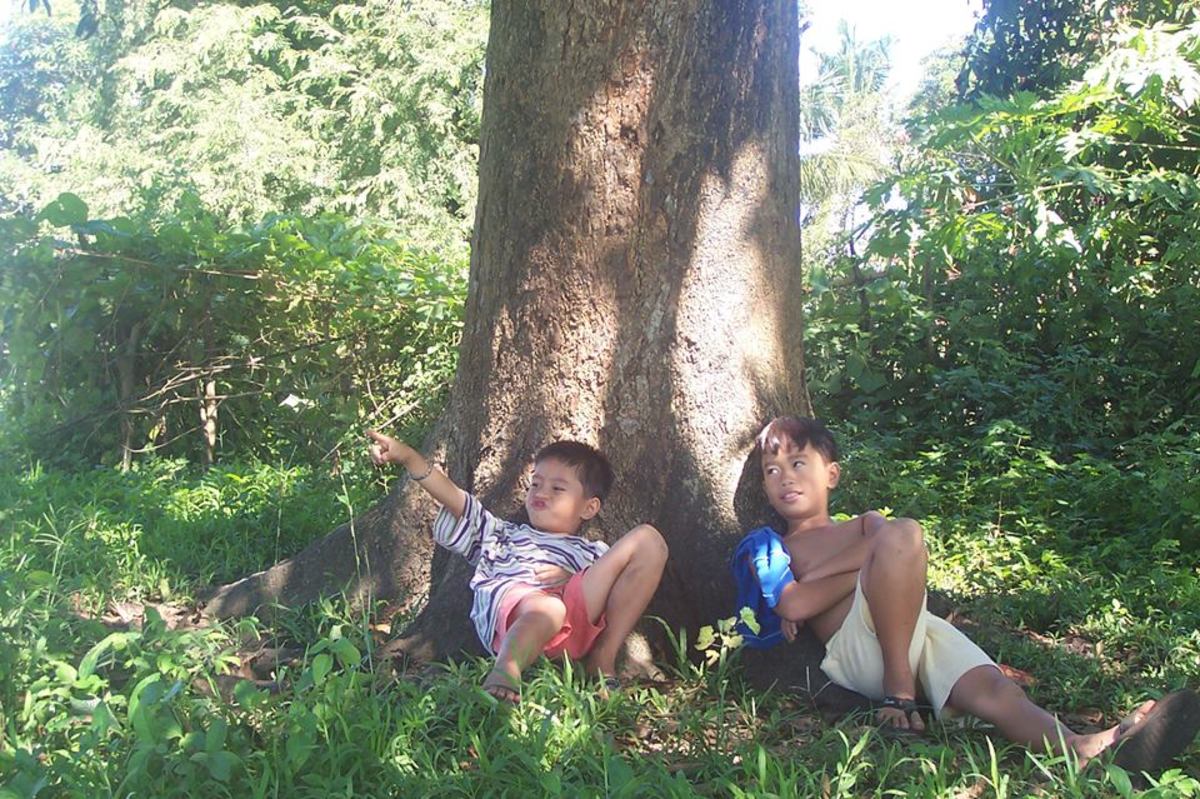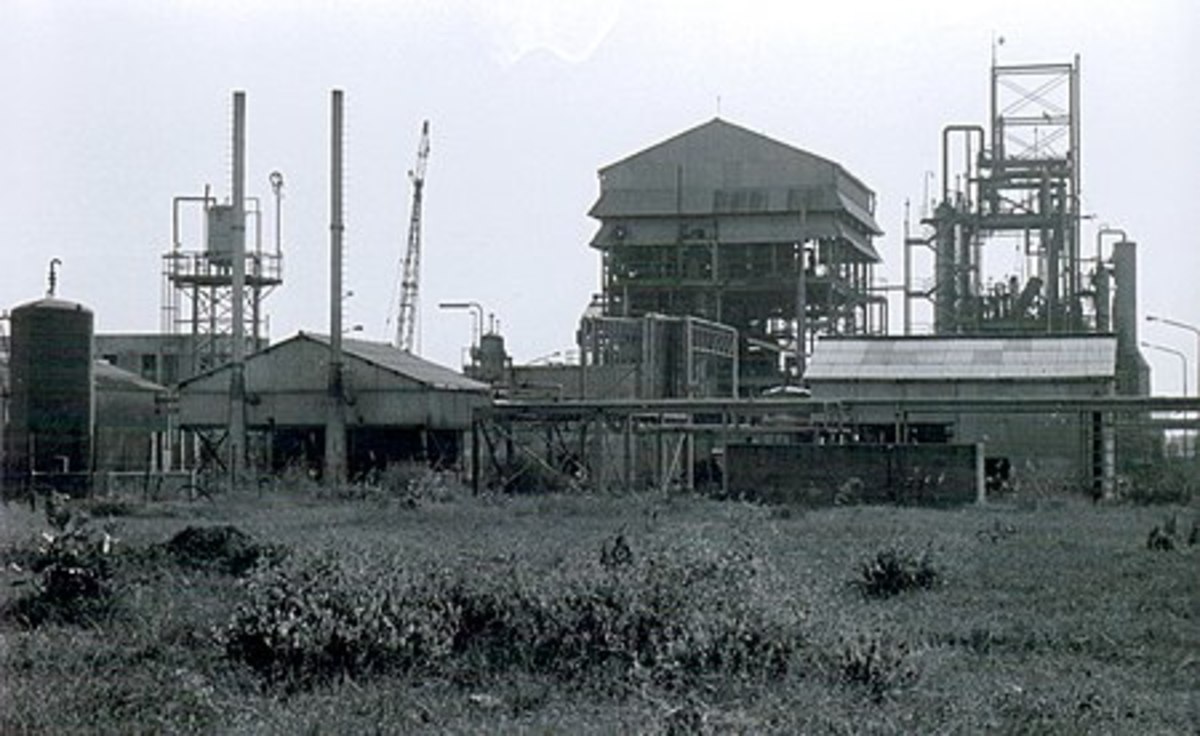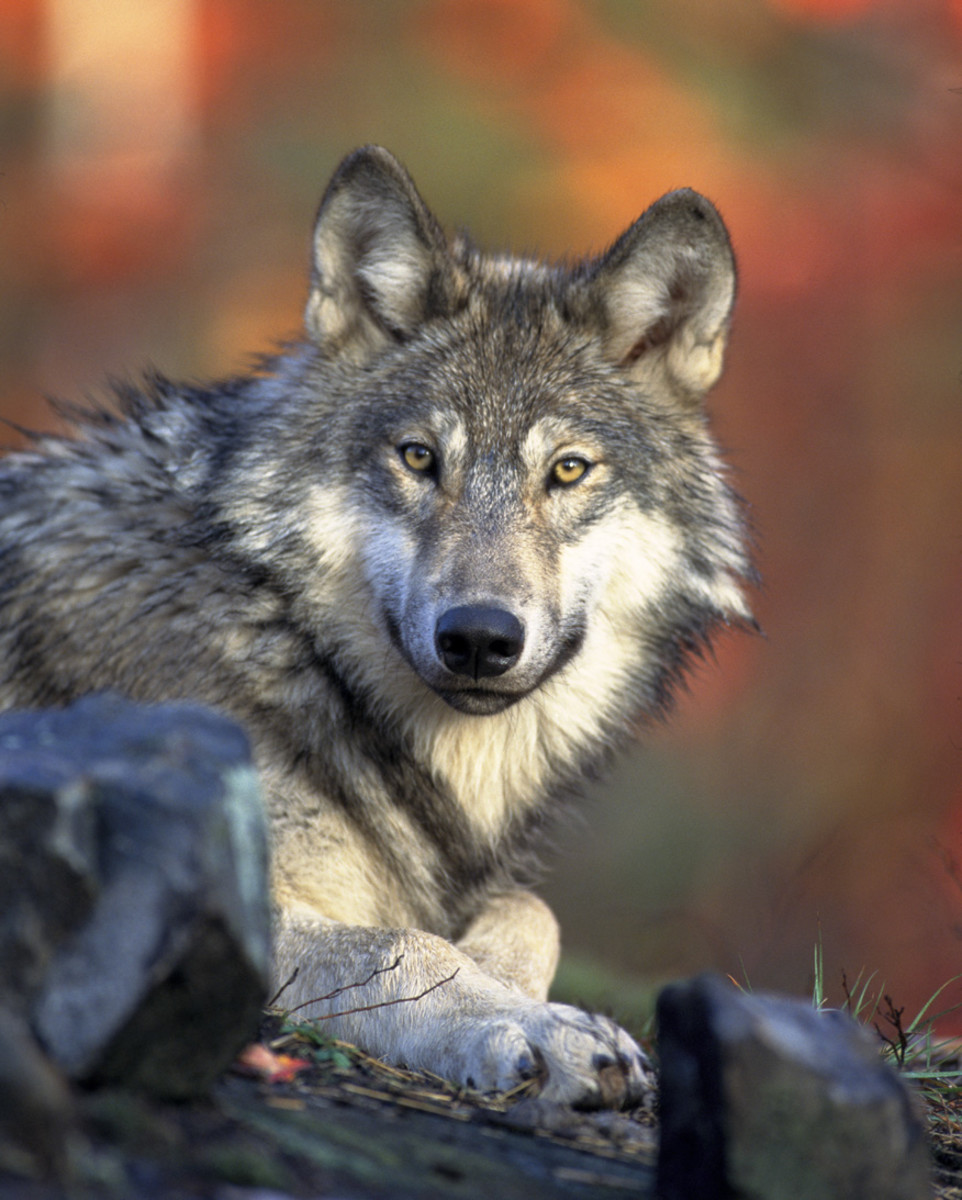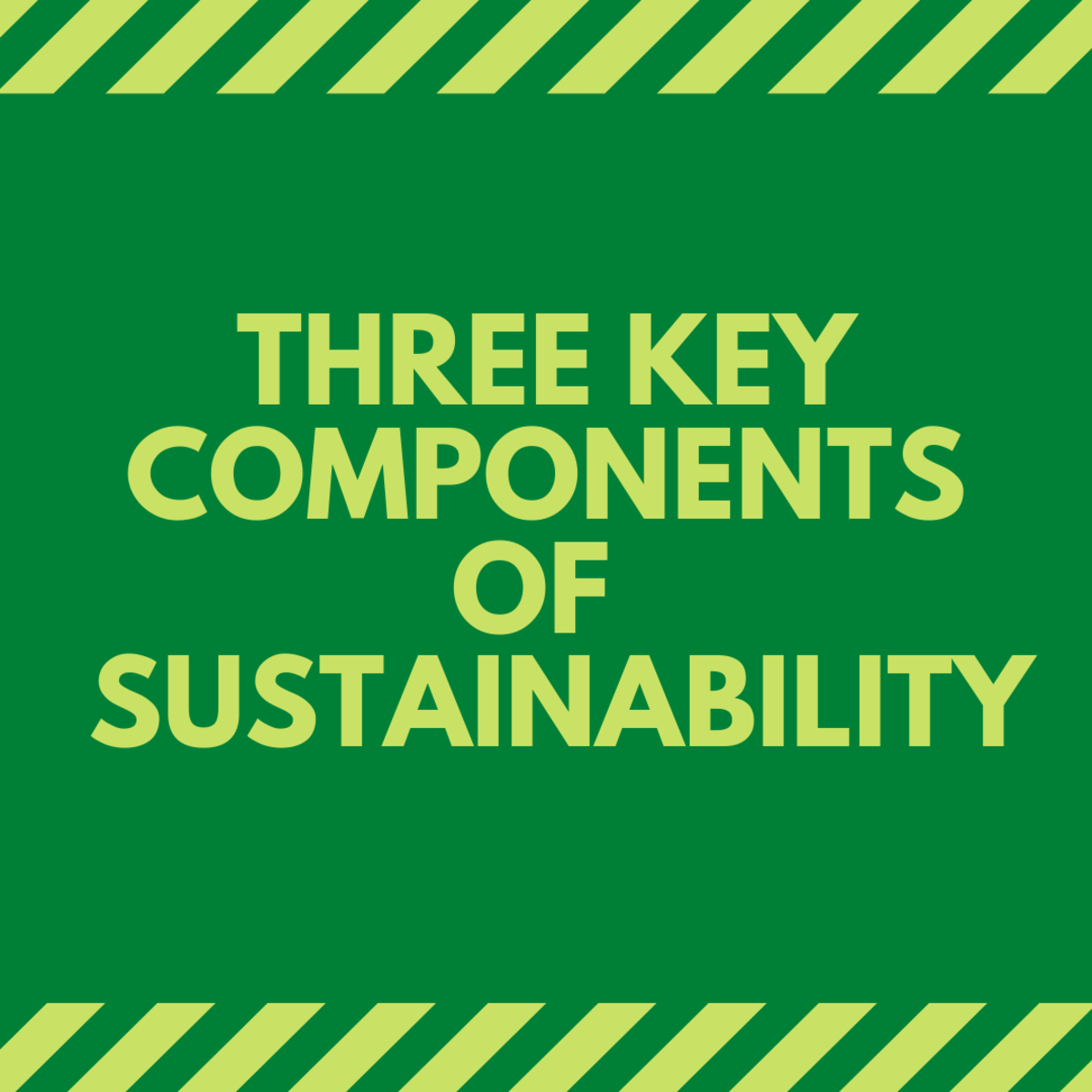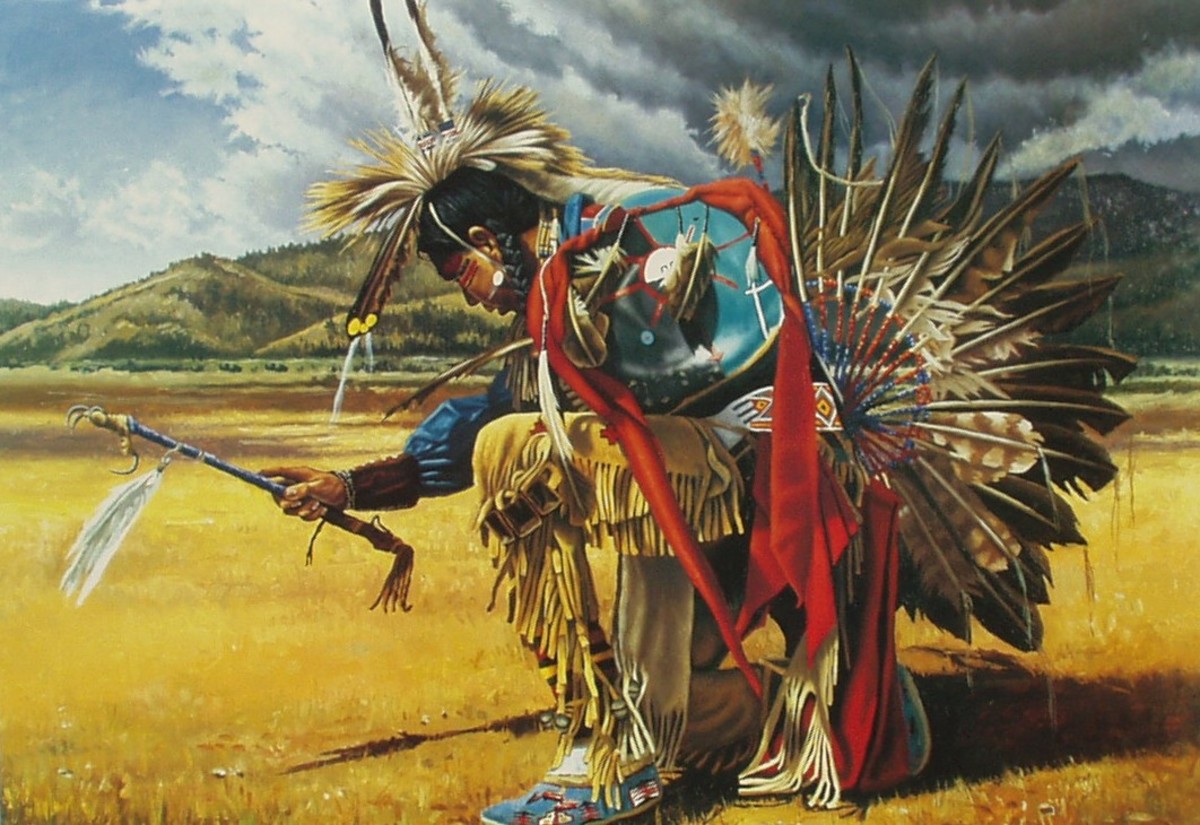An Analysis of the UNEV Pipeline
Get Paid to Write
Share your opinion and expertise and make residual income at the same time by signing up for Hubpages.
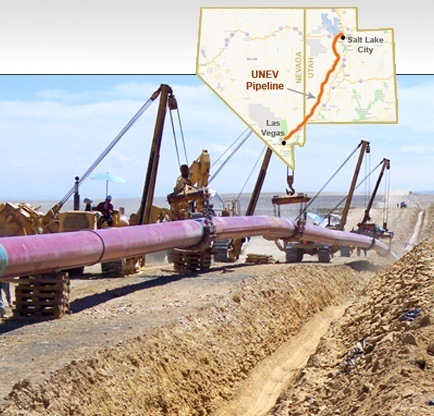
Impacts on Economy & Ecology
The UNEV pipeline is a joint venture between Holly Corporation, a Texas-based independent petroleum refiner and marketer (with a 75% stake in the project), and the Utah-based Sinclair Transportation Company (with a 25% stake in the project) to build a pipeline from the refineries based in North Salt Lake, Utah, to two distribution terminals (one will be based in Iron Country Utah while the other will be based in North Las Vegas Nevada) for the purposes of delivering gasoline and other petroleum products to Southern Utah and Las Vegas quickly, cheaply and with lower risk to the environment. The total cost of the project was estimated at $300 million. While this paper will address the specific areas affected, the reason for the pipeline and outline of the safety measures used in building the pipeline, its primary focus will be to analyze the economic and environmental impact that this pipeline will have on the regions it will run through and serve.
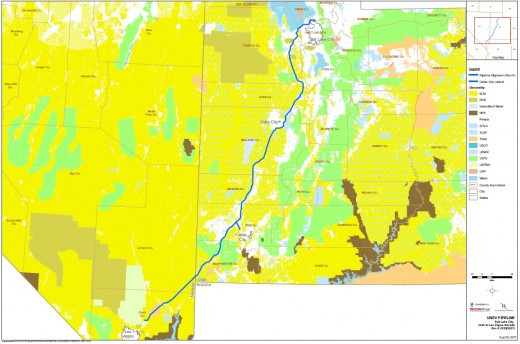
Targeted Areas
The areas targeted to benefit from the pipeline specifically are Las Vegas, Nevada, and surrounding communities as well as Iron County and Washington County in Southern Utah. Justification for building the pipeline is growth. Even with the recent economic recession, the growth rate of Iron and Washington Counties Utah and Las Vegas Nevada are some of the highest in the nation. Added to that, the economic impact of the tourist industry in all the previously mentioned areas and the need for fuel to be delivered quickly, cheaply and safely is very high. Currently Las Vegas is being served by two pipelines coming from California, and both are operating at capacity with there still being a demand for more (Robison). This means that the excess demand is being satisfied by tanker trucks, which have hazards of their own. This is also the means by which fuel is delivered to Iron and Washington Counties. Every indication shows that fuel consumption is increasing in all these areas, which indicate that there needs to be a change in the market of fuel delivery. The pipeline is expected to initially have the capacity to carry approximately 62,000 barrels per day (with one barrel equaling 42 gallons) of fuel but has the capacity to deliver a total of 118,000 barrels per day (Robison; Nevada's Needs).
Safety Measures
The 400-mile 12-inch diameter welded steel pipeline will be buried. According the project webpage, all pipe used will meet the industry’s standards which are set by the American Petroleum Institute. Furthermore, each weld is x-rayed before being buried. Also, before going into service the entire pipeline is going to be stress tested with water at a pressure that is at 125% over the operating pressure to ensure integrity. My father-in-law is currently working for one of the companies contracting with the project and has observed the meticulous manner by which the pipe is treated as well as the regulatory representatives that have been present. The pipe is coated in a fusion-bonded epoxy which is non-reactive and prevents external corrosion. The pipeline is also being protected by means of cathodic protection, which is an electrical means of preventing corrosion, which is a secondary protection (Safety).
Testing and Monitoring
Once complete, the pipeline’s pressure & integrity will be monitored 24/7 by Holly Corporation’s control center. If communications are lost for more than a minute between the different terminal and monitoring points on the pipeline, the center will shut down the line. Additionally there is an internal inspection tool called a smart pig that will be used to measure metal loss due to corrosion and look for possible damage or weak spots within the pipeline. Devices will be installed at multiple points on the pipeline to detect damage or other indications of wear and tear on the pipeline. Finally, ground and aerial patrols will be conducted every other week to, according to Holly Corporation, “to monitor for any third-party encroachment, right-of-way condition and the condition of the line markers and above ground valves.” All of these steps are meant to protect the integrity of the pipeline and prevent possible damage to the environment by leakages or spills.
Species Affected
The pipeline will be passing directly though the habitat of two particular species that are currently protected under federal law. These two species are the desert tortoise and the Utah prairie dog. For the sake of clarity and to prevent confusion of the two species I will devote separate sections to each species of animal.
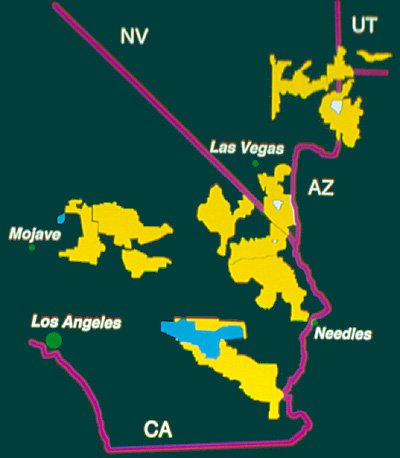
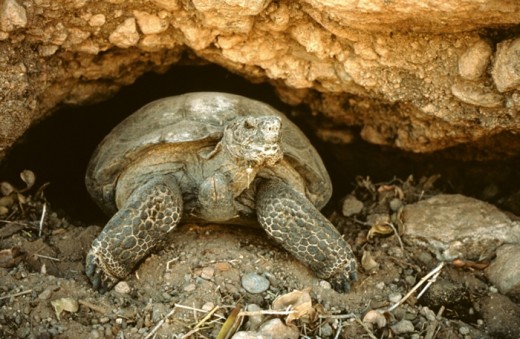
The Desert Tortoise
The desert tortoise is one of four gopher tortoises in North America. It is distinguished by a high domed shell and growth rings on several parts of its shell. The desert tortoise is listed as a threatened species and therefore protected under federal law. It originally was listed as endangered in 1989 and moved to the threatened classification in 1994. Endangered means that the species is threatened to go extinct within 6 months to a year while threatened means that the species may be at risk of extinction within 1 to 10 years. Since efforts have been made to preserve this species the mortality rate has decreased, although it is still very high due to human encroachment on its habitat. According to a report on the impact of the pipeline on the tortoises’ habitat:
“Threats to this species include direct and indirect human-caused mortality. Impacts such as destruction, degradation, and fragmentation of their habitat from urbanization, agricultural development, livestock grazing, mining, roads, vehicle-oriented recreational use, and losses from human take and disease have contributed to population declines (USFWS, 1994b). The primary impetus for listing the Mojave populations of this species was the documentation of an outbreak of a virulent respiratory disease and heavy predation by ravens (Corvus corax) on juvenile tortoises which, combined, were believed to be causing dramatic declines in some subpopulations. Recently, expansion of military ranges and solar energy development are considered threats to this species’ habitat (Biological Assessment: UNEV Pipeline Project).
While development is an issue for the tortoise since it needs stable ground to dig its nests and native vegetation to feed on, the pipeline was assessed to not be a major threat because it is following a pre-existing utility path and so the ground is already disturbed (Final EIS). This, however, does not mean that the pipeline has no effect on the species, or, rather, to flip the coin, that the species does not have an impact on the pipeline. In a telephone interview with friend who is working on the pipeline it seems that not only are BLM and EPA agents out watching the construction, but also a large number of environmental groups are micro-managing every step of the project, whether they have the authority to or not. While the preservation of a species is important, the environmental activists are actually causing more harm than help because this causes trucks to sit running idle in therefore harm the environment where the tortoise and other species (such as the prairie dog) live. Additionally, the added cost to construction means it is harming the businesses taking the risk building this pipeline (Working on the Pipeline).
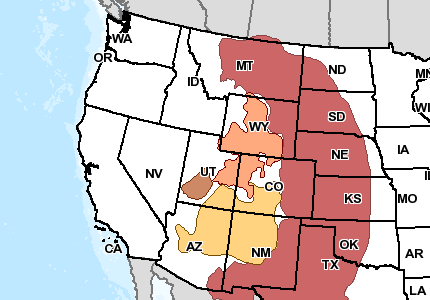
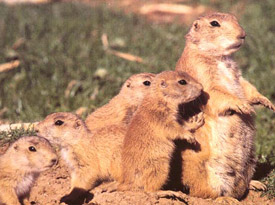
Utah Prairie Dog
The Utah prairie dog is classified as threatened. Their habitat is limited to Southern Utah. This particular species is one of two species of prairie dogs that is protected under federal law. In the ‘70s the population was below 3300. Classified as endangered in 1973, the species was reclassified as threatened in 1984. These prairie dogs live in colonies and have a matriarchal based “clan” system. They are thought to be a brake off of the White-tailed Prairie Dogs because of their close genetic heritage. Prairie dogs are omnivorous and eat most vegetation, insects and have been known to be cannibalistic if one of their own is found dead above ground. They are effectively scavengers. Since their classification and subsequent reclassification the species has not only stabilized but is well on its way to stabilizing according the U.S. Fish and Wildlife Service (Endangered Species). This does not mean that the species is not threatened, however. Research on the part of the BLM and Wildlife Service showed that the pipeline would go through an area that was currently not occupied by the species but that couple be occupied in the near future. The only major issue with respects to the prairie dogs is the post construction period. Since there are periodic patrols as well as the needed for access for repair and service work this could potential disturb future habitats and cause harm to the species. The stipulations upon the construction companies in the event of a prairie dog spotting is that all work within a half mile of the spotting must stop while specialist are contacted and the prairies dogs are removed or barriers to their movement into the work area are erected (Biological Assessment - Addendum: UNEV Pipeline Project). Per the interview with the pipeline worker, this has happened several times during the construction process. The oversight and “meddling” mentioned in regards to the desert tortoise was also experienced in the prairie dog portion of the project (Working on the Pipeline).
Human Impact
Another aspect of the pipeline and its impact was considered; the people living in and around it and how they felt and feel about it being in such close proximity to them. This is the case with the people of Tooele County and City. The pipeline was proposed to pass directly through the center of the county and town to the uproar of the locals (Scribner). This of course was pending approval from the county and city officials, but the people of Tooele were not pleased with these prospects. Research on their part showed that there was little to no economic advantage for them to allow the (at that time) currently planned pipeline pass through while there was a lot of threat to their water sources should there be a breach in the pipeline. The citizens of the town followed the procedures provided to change the plans and as a result there was an addition of 4 miles to the pipeline to bypass the areas of concern and prevent the major concerns (Miley). There are still citizens of the county and town that are not thrilled with the prospects of the pipeline being so close because of the “what if” aspects of the pipeline, but since the pipeline’s construction is proceeding it appears that those concerns are not as major as the previously mentioned ones.
Economic Benefits
According to the US Department of Transportation, pipelines account for about half of all fuels transported domestically and is the safest means of transporting petroleum products. Also, according to this source, this particular pipeline would have a positive effect on the environment and economies Southern Utah and Southern Nevada. Estimates on savings in fuel alone for the delivery of petroleum products indicate that pipeline is a worthy investment. Add to that the decrease in exhaust and road hazards relating to heavy trucks delivering these products and the benefits increase. Furthermore, the addition of this pipeline provides a backup fuel delivery system to Las Vegas and surrounding areas in the event of failure in the two California pipelines or refineries and is a huge plus. Additionally, another supply source would drive prices for fuel down, creating a large benefit to consumers. Economically speaking, the pipeline has all the marks of being a positive to consumers and supply. But another thing that the pipeline brings is jobs. First is the benefit to over the road trucks. Instead of driving long distances to deliver the fuels the trips will be shorter and regional. Furthermore, the terminals in Iron County Utah and North Las Vegas Nevada will provide permanent jobs for 4 or more people per site (UNEV Pipeline, LLC). While there is no way to measure it at present, there are also the unseen benefits of money saved and resourced available to be used in other sector and ways.
Conclusion
In summary, the pipeline is being built in response to a great need for a safe, effective delivery system of petroleum products. The environmental implications of the pipeline are resolved through planning, oversight and safety measures. And as we have seen the construction methods are such that the contractors and investors are taking great preventative measures for all imaginable events that could impact the line and harm the environment surrounding it. Finally, the impact on local economies in job creation, increased road safety and less toxins being released into the environment through the building of this pipeline shows that the benefits of the UNEV Pipeline’s construction far outweigh any of the costs.
Works Cited
Biological Assessment: UNEV Pipeline Project. Rep. Jan. 2008. U.S. Fish and Wildlife Services & U.S. Bureau of Land Management. 28 July 2011 <http://www.fws.gov/filedownloads/ftp_region6_upload/FOIA%20READING%20ROOM/FOIA%202010/Utah%20Prairie%20Dog%20Section%207%20Consultations/07_F_0242_20090130_comments2.pdf>.
Biological Assessment - Addendum: UNEV Pipeline Project. Rep. 28 Sept. 2009. U.S. Fish and Wildlife Service. 28 July 2011 <http://www.fws.gov/filedownloads/ftp_region6_upload/FOIA%20READING%20ROOM/FOIA%202010/Utah%20Prairie%20Dog%20Section%207%20Consultations/07_F_0242_20090928_UNEV%20BA_Addendum_DRAFT.pdf>.
"Endangered Species: Mountain-Prairie Region: U.S. Fish and Wildlife Service." U.S. Fish and Wildlife Service Home. U.S. Fish and Wildlife Service. 17 July 2011 <http://www.fws.gov/mountain-prairie/species/mammals/utprairiedog/>.
"Homepage." UNEV Pipeline, LLC. UNEV Pipeline, LLC. 28 July 2011 <http://www.unevpipeline.com/>.
Miley, Sarah. "Tooele Transcript Bulletin - Fuel pipeline route changed." Tooele Transcript Bulletin. 01 May 2008. Tooele Transcript Bulletin. 29 July 2011 <http://www.tooeletranscript.com/view/full_story/95683/article-Fuel-pipeline-route-changed?>.
"Nevada's Needs." UNEV Pipeline, LLC. 17 July 2011 <http://www.unevpipeline.com/nevada.htm>.
Robison, Vernon. "Pipeline Construction Project In Moapa | mvprogress.com." Mvprogress.com: Front Page - Moapa Valley Progress. 11 May 2011. Moapa Valley Progress. 17 July 2011 <http://mvprogress.com/2011/05/11/pipeline-construction-project-in-moapa/>.
"Safety." UNEV Pipeline, LLC. UNEV Pipeline, LLC. 17 July 2011 <http://www.unevpipeline.com/safety.htm>.
Scribner, Kari. "Tooele Transcript Bulletin - Pipeline does not need to pass through Tooele." Tooele Transcript Bulletin. 01 Apr. 2008. Tooele Transcript Bulletin. 28 July 2011 <http://www.tooeletranscript.com/view/full_story/93678/article-Pipeline-does-not-need-to-pass-through-Tooele?>.
"UNEV Final EIS." DOI: BLM: National Home Page. 03 Apr. 2011. BLM. 29 July 2011 <http://www.blm.gov/ut/st/en/prog/more/lands_and_realty/unev_pipeline_eis/unev_final_eis.html>.
UNEV Pipeline, LLC. "Terminals." UNEV Pipeline, LLC. UNEV Pipeline, LLC. 29 July 2011 <http://www.unevpipeline.com/terminals.htm>.
U.S. Department of Transportation. "Pipelines." U.S. Department of Transportation - Pipelines. PHMSA. 6 July 2011 <phmsa.dot.gov/pipeline>.
"Working on the Pipeline." Telephone interview. 28 July 2011.
Related Links
- Facts About The Utah Prairie Dog
More information on the Utah prairie dog and its status. - Unev pipeline - Wikipedia, the free encyclopedia

